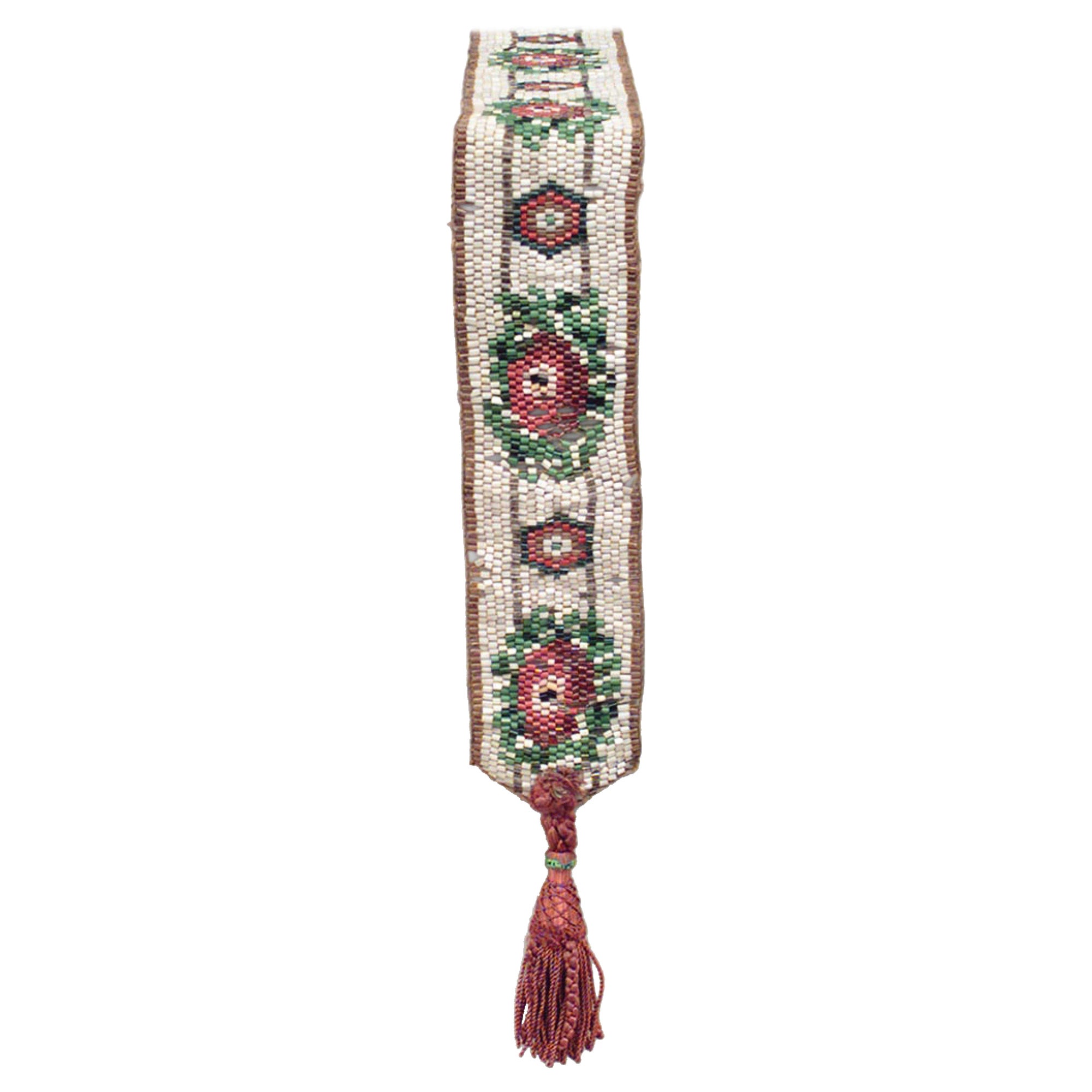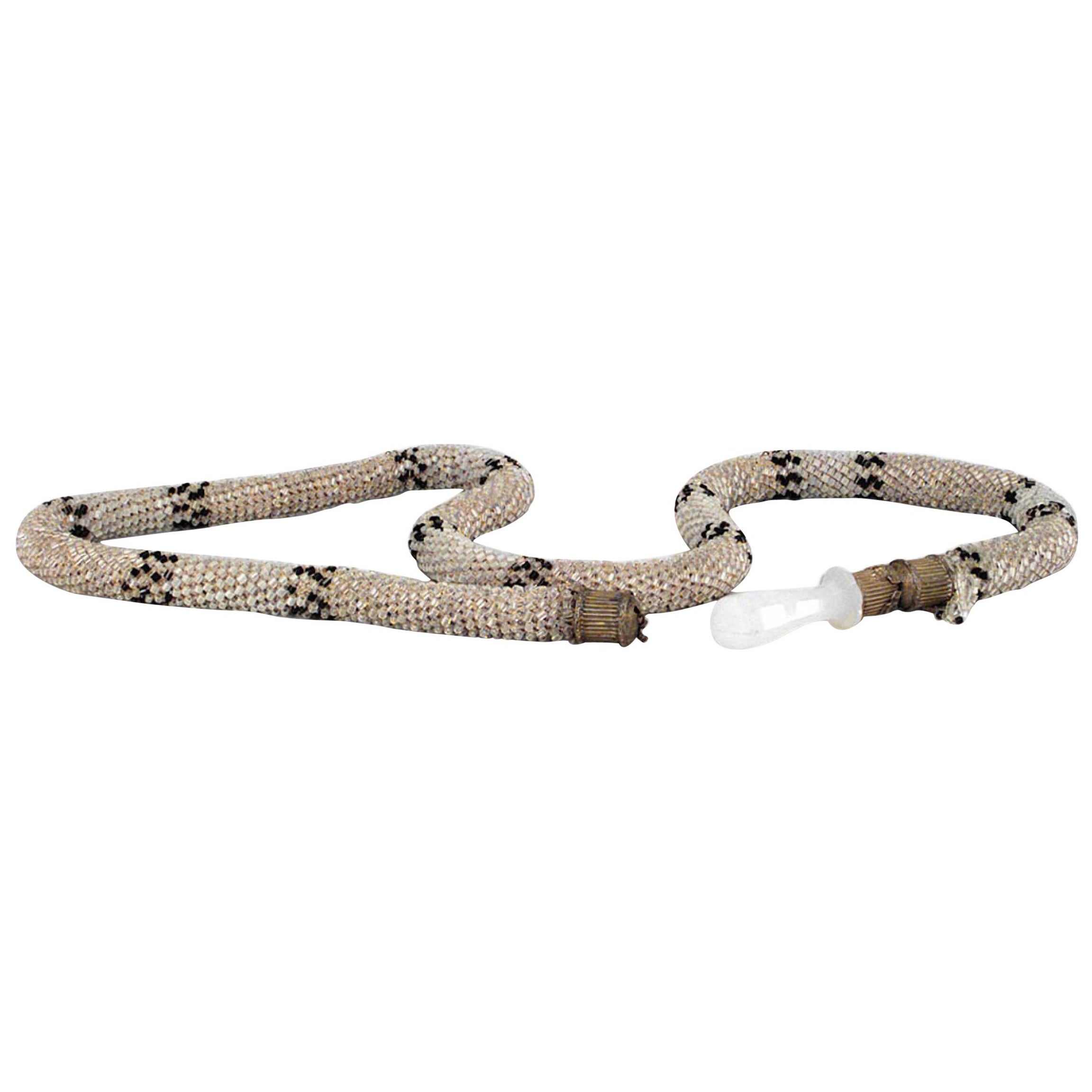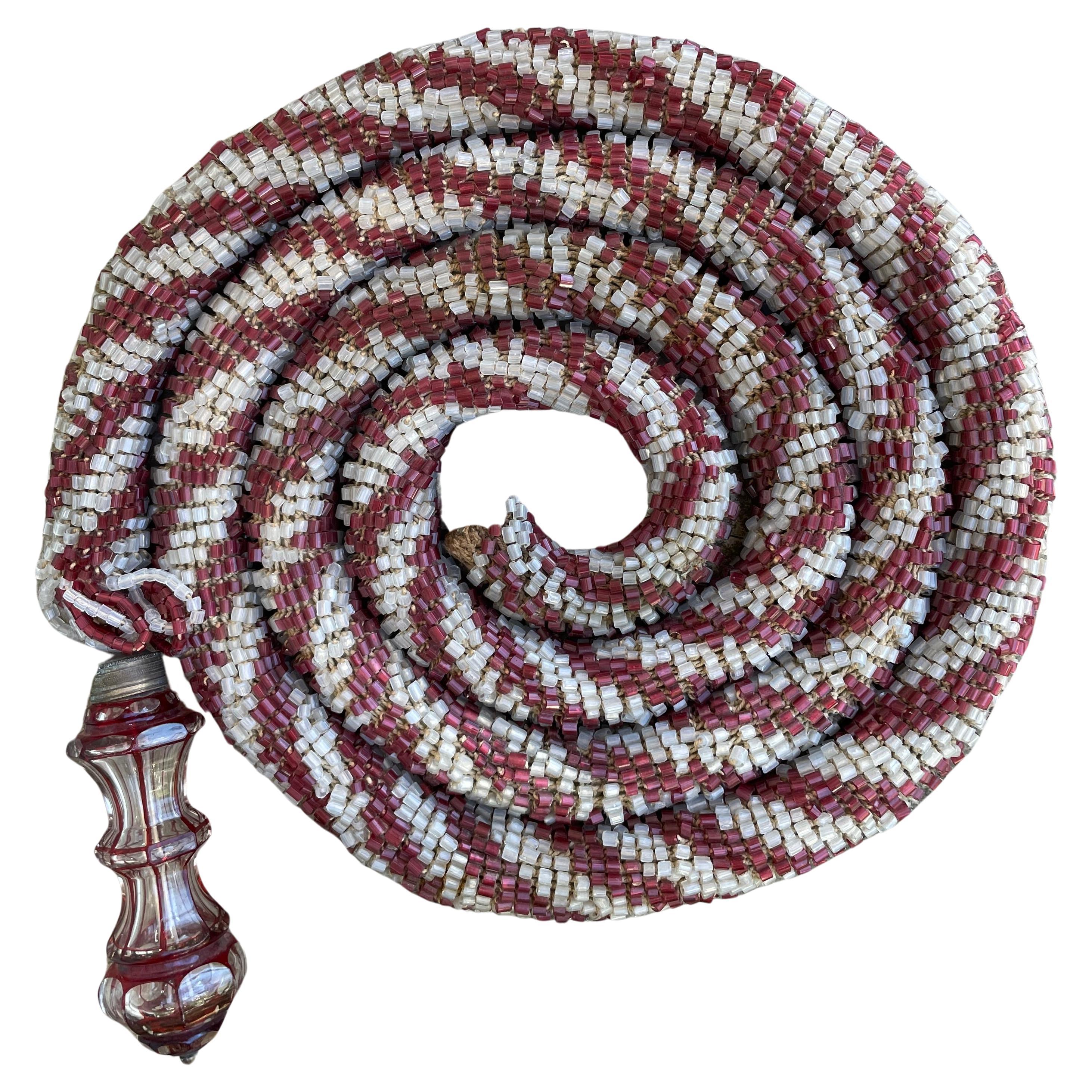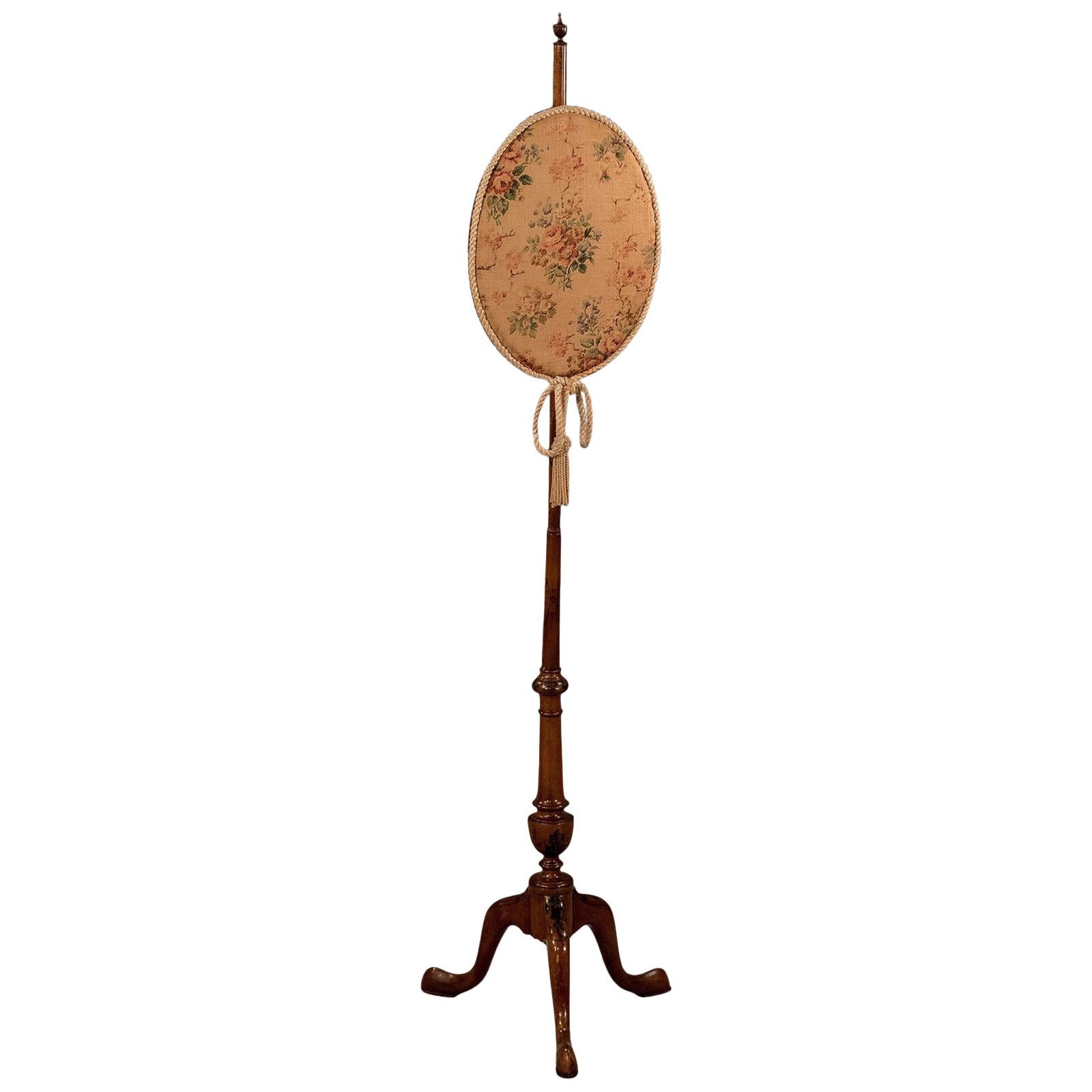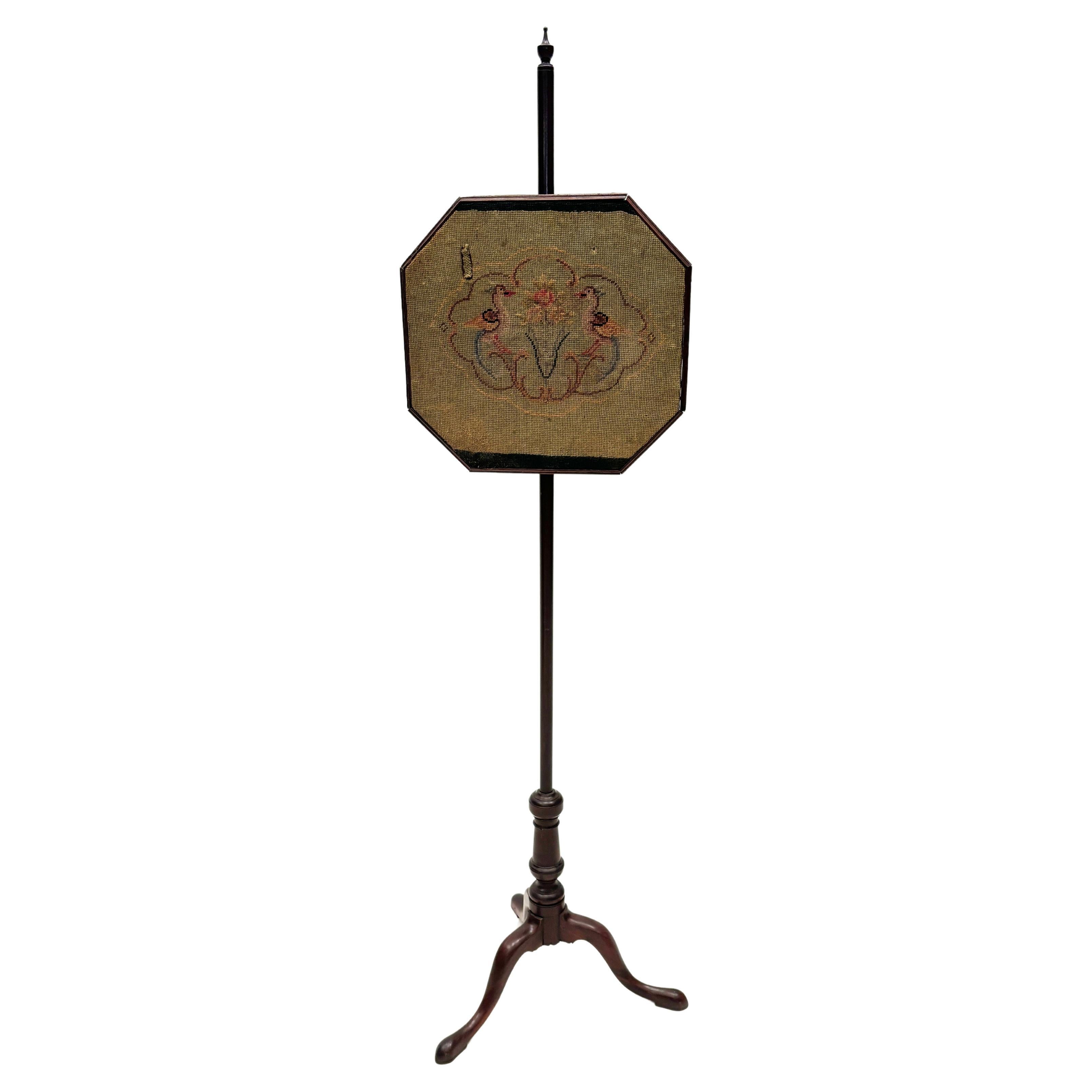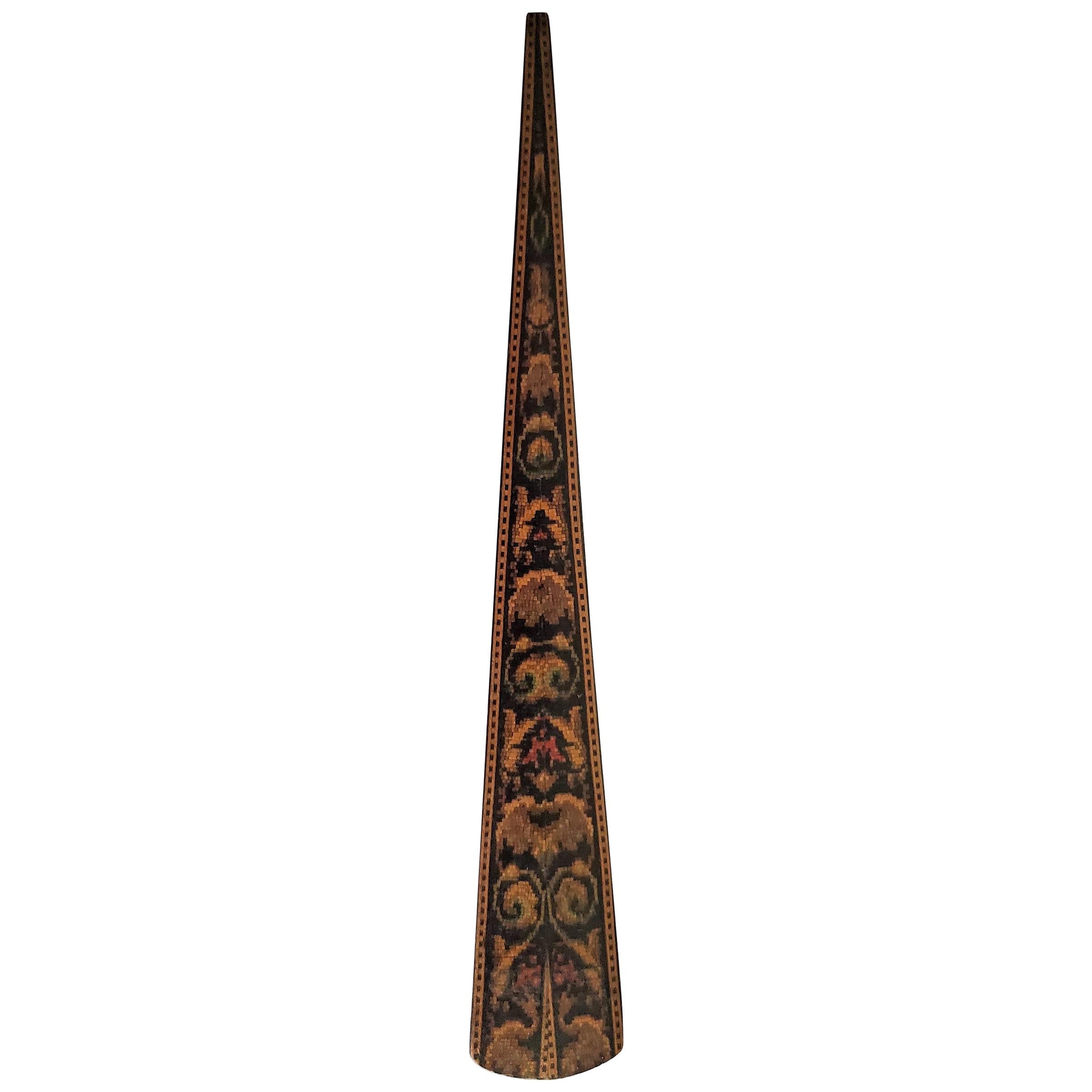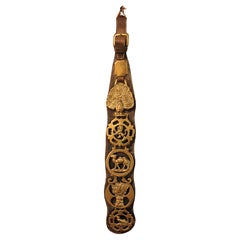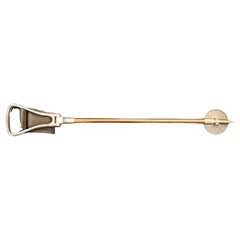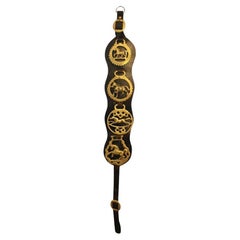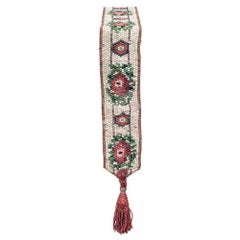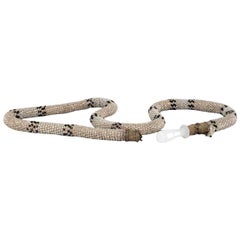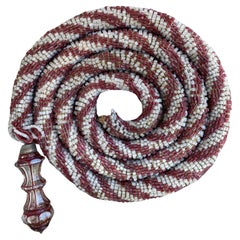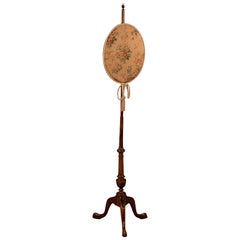Items Similar to Mid-Late 19th Century English Needlepoint Bell Pull
Want more images or videos?
Request additional images or videos from the seller
1 of 9
Mid-Late 19th Century English Needlepoint Bell Pull
$450
£339.79
€394.23
CA$632.39
A$704.57
CHF 367.82
MX$8,554.46
NOK 4,623.26
SEK 4,370.11
DKK 2,942.87
About the Item
Mid-late 19th century English needlepoint bell pull. A very rare & splendid example with gilt bronze lion mask mounts; maroon backing. Floral, floret & geometric motifs.
75" long, 3.75" w., 0.75" thick at mounts.
We are a family business that has been a major source for the selective buyer for over 90 years. We are one the finest antiques shop in the South and Mid-Atlantic, proclaimed the “Best Antiques Shop in the Mid-Atlantic” by Mid-Atlantic Antiques Magazine. With over 7,500 square feet of show room space in an impressive Italianate Villa setting, we are a must visit spot for antiques collectors, dealers and decorators alike!
We specialize in period 18th and 19th century English and Country French furniture, fine art, silver, porcelain, lighting, and all appropriate decorative accessories. You will also find pieces of American origin, from Continental Europe, Asia, and the Middle East and ranging in date and style from Baroque to Mid-Century Modern. In short, we are a treasure trove of unique items with an unprecedented selection for your home or collection!
- Dimensions:Height: 75 in (190.5 cm)Width: 3.75 in (9.53 cm)Depth: 0.75 in (1.91 cm)
- Style:Victorian (Of the Period)
- Materials and Techniques:
- Place of Origin:
- Period:
- Date of Manufacture:C. Mid-Late 19th Century
- Condition:Wear consistent with age and use. Condition commensurate with age and use.
- Seller Location:Chapel Hill, NC
- Reference Number:Seller: WLI-319z1stDibs: LU6458246424982
About the Seller
4.9
Platinum Seller
Premium sellers with a 4.7+ rating and 24-hour response times
Established in 1930
1stDibs seller since 2022
340 sales on 1stDibs
Typical response time: 1 hour
- ShippingRetrieving quote...Shipping from: Chapel Hill, NC
- Return Policy
Authenticity Guarantee
In the unlikely event there’s an issue with an item’s authenticity, contact us within 1 year for a full refund. DetailsMoney-Back Guarantee
If your item is not as described, is damaged in transit, or does not arrive, contact us within 7 days for a full refund. Details24-Hour Cancellation
You have a 24-hour grace period in which to reconsider your purchase, with no questions asked.Vetted Professional Sellers
Our world-class sellers must adhere to strict standards for service and quality, maintaining the integrity of our listings.Price-Match Guarantee
If you find that a seller listed the same item for a lower price elsewhere, we’ll match it.Trusted Global Delivery
Our best-in-class carrier network provides specialized shipping options worldwide, including custom delivery.More From This Seller
View AllLate 19th Century English 5-Brass Leather Horse Strap
Located in Chapel Hill, NC
Late 19th century English 5-brass leather horse strap. Shaped leather featuring brasses of a Proud Peacock, Lion Rampant, Double Hump Camel, Wheat Sheaf, & Bird. 22 5/8" x 3.25" x 7/...
Category
Antique Late 19th Century English Decorative Art
Materials
Brass
Circa 1960s English Sporting Event or Hunting Walking Stick With Folding Seat
Located in Chapel Hill, NC
Circa 1960s English sporting event or hunting walking stick with folding seat. Steel with coppered finish shaft, leather seat. "Gamebird Trade Mark" label; "Made In England" stamp; "...
Category
Mid-20th Century English Sports Equipment and Memorabilia
Materials
Steel
Early 20th Century English 4-Brass Leather Horse Strap
Located in Chapel Hill, NC
Early 20th century English 4-brass leather horse strap. Shaped leather featuring brasses of a high-stepping horse, dray horse, running horse, & rampant horse. 28.75" x 3.5" x 7/8".
Category
Early 20th Century English Antiquities
Materials
Brass
Early 20th Century English 6-Brass Leather Horse Strap
Located in Chapel Hill, NC
Early 20th century English 6-brass leather horse strap. Thick, shaped black leather. Brasses of a bull, plowman, oak leaves & acorn, horse's bust in bridle, wheat sheaf & tools, and ...
Category
Early 20th Century English Art Deco Decorative Art
Materials
Brass
Circa 1960s English Sporting Event or Hunting Walking Stick With Folding Seat
Located in Chapel Hill, NC
Circa 1960s English sporting event or hunting walking stick with folding seat. Steel with coppered finish shaft, leather seat. "Gamebird Trade Mark" label; "Made In England" stamp; "...
Category
Late 20th Century English Sports Equipment and Memorabilia
Materials
Copper, Steel
Early-Mid 20th Century Chinese Framed Silver Buddhist Scepter of Authority
Located in Chapel Hill, NC
Early-mid 20th century Chinese framed Buddhist scepter of authority. Low grade silver shows degrading before it was framed. Filled with bats & a pair of 5-toed dragons surrounding a ...
Category
Mid-20th Century Chinese Folk Art Religious Items
Materials
Silver
You May Also Like
Victorian Beaded Bell Pull
Located in Queens, NY
American Victorian multi colored beaded glass bell pull with gold beaded border and maroon tassel pull
Category
Antique Late 19th Century American Victorian Decorative Art
Materials
Glass
Victorian Beaded Bell Pull
Located in Queens, NY
American Victorian clear and blue trimmed beaded glass bell pull with white opaline pull
Category
Antique Late 19th Century American Victorian Decorative Art
Materials
Glass
Bohemian Beaded Bell Pull
Located in New York, NY
Bohemian beaded bell pull. Nineteenth century hand tied blown clear and amethyst glass extravagantly beaded bell pull. Bohemia, mid 19th century
Dime...
Category
Antique Mid-19th Century Czech Bohemian Curtains and Valances
Materials
Blown Glass, Beads
Antique Pole Screen, English, Victorian, Mahogany, Needlepoint, Tapestry
Located in Hele, Devon, GB
This is an antique pole screen, an English, Victorian fireside piece in mahogany with a needlepoint, tapestry panel. Dating to circa 1880.
A cha...
Category
Antique 19th Century English Victorian Screens and Room Dividers
Materials
Mahogany
c. 1800 English Fire Pole Screen Needlepoint/Tapestry Stand
Located in Louisville, KY
Unique and finely made, this English Regency pole screen is constructed of beautiful Rosewood that’s hand-turned, carved and jointed, topped with a delicate finial with three cabriol...
Category
Antique Early 19th Century English Regency Paintings and Screens
Materials
Textile, Wood, Rosewood
Rare 19th Century English Tunbridgeware Hair Pin or Slide
Located in Dallas, TX
PRESENTING an EXTREMELY UNIQUE and RARE 19C British Tunbridgeware Hair Pin/Bobbin or Slide.
This slide is unlike any of it’s kind we have seen before, it is a VERY RARE survivor.
From circa 1860 – 80 and made in Tunbridge Wells, England.
Made of walnut with gorgeous marquetry inlay on the entirety of the front with classic Tunbridgeware micro-mosaic all over the front. The rear is walnut.
The marquetry inlay appears to be various different woods, namely, maple, walnut and satinwood.
Would have been worn in a Lady’s hair bun with the micro-mosaic facing forward.
This would have belonged to a VERY ELEGANT LADY in the mid to late 19th Century.
Tunbridge ware is a form of decoratively inlaid woodwork, typically in the form of boxes, that is characteristic of Tonbridge and the spa town of Royal Tunbridge Wells in Kent in the 18th and 19th centuries. The decoration typically consists of a mosaic of many very small pieces of different coloured woods that form a pictorial vignette. Shaped rods and slivers of wood were first carefully glued together, then cut into many thin slices of identical pictorial veneer with a fine saw. Elaborately striped and feathered bandings for framing were pre-formed in a similar fashion.
There is a collection of Tunbridge ware in the Tunbridge Wells Museum and Art Gallery in Tunbridge Wells.
The famous makers of Tunbridge ware were in the Tunbridge Wells area of Kent; their most notable work was from circa 1830-1900.
Early makers of Tunbridge ware, in Tunbridge Wells in the mid-18th century, were the Burrows family, and Fenner and Co. In the 19th century, around 1830, James Burrows invented a technique of creating mosaics from wooden tesserae. Henry Hollamby, apprenticed to the Burrows family, set up on his own in 1842 and became an important manufacturer of Tunbridge ware, employing about 40 people.
Edmund Nye (1797–1863) and his father took over the Fenner company when William Fenner retired in 1840, after 30 years in partnership with him. Thomas Barton (1819–1903), previously apprenticed at the Wise factory, joined the Nyes in 1836, and worked as Nye’s designer; he took over the business in 1863 and continued there until his death.
In Tonbridge (near to Tunbridge Wells), George Wise (1703–1779) is known to have had a business in 1746. It continued with his son Thomas, and Thomas’s nephew George (1779–1869), who took over in 1806. In its early years the company made articles such as workboxes and tea caddies with prints of popular views; later items had pictures created from mosaics. Their workshop in Tonbridge, Wise’s Tunbridge Ware Manufactory, was next to the Big Bridge over the Medway; the building was demolished in 1886 to widen the approach to the bridge.
Tunbridge ware became popular with visitors to the spa town of Tunbridge Wells, who bought them as souvenirs and gifts. Articles included cribbage boards, paperweights, writing slopes, snuffboxes and glove boxes.
At the Great Exhibition of 1851, Tunbridge ware by Edmund Nye, Robert Russell and Henry Hollamby was shown; Edmund Nye received a commendation from the judges for his work. He exhibited a table depicting a mosaic of a ship at sea; 110,800 tesserae were used in making the picture.
The manufacturers of Tunbridge ware were cottage industries, and they were no more than nine in Tunbridge Wells and one in Tonbridge. The number declined in the 1880s; competent craftsmen were hard to find, and public tastes changed. After the death of Thomas Barton in 1903 the only surviving firm was Boyce, Brown and Kemp, which closed in 1927.
Marquetry was an old technique which was continued by Nye and Barton to create images such as birds or butterflies.
‘Green Oak’ as caused by the fungus Chlorociboria aeruginascens.
Stickware and half-square mosaic was invented by James Burrows in about 1830: a bunch of wooden sticks of different colours, each having triangular or diamond-shaped cross section, were tightly glued together; in the case of stickware, the resulting block was dried, then turned to form an article such as the base of a pincushion. For half-square mosaic, thin slices were taken from the composite block, and applied to a surface.
Tesselated mosaic, was a development by James Burrows of half-square mosaic; it was adopted by George Wise and Edmund Nye. Minute tesserae were used to form a wide variety of geometric and pictorial designs.
Many sorts of wood were used for the various colours; about 40 were in regular use. Only natural colors were used; green was provided by “green oak”, produced by the action of fungus on fallen oak. Designs for articles were often taken from designs of Berlin wool work.
Category
Antique Late 19th Century English High Victorian Collectible Jewelry
Materials
Satinwood, Walnut
